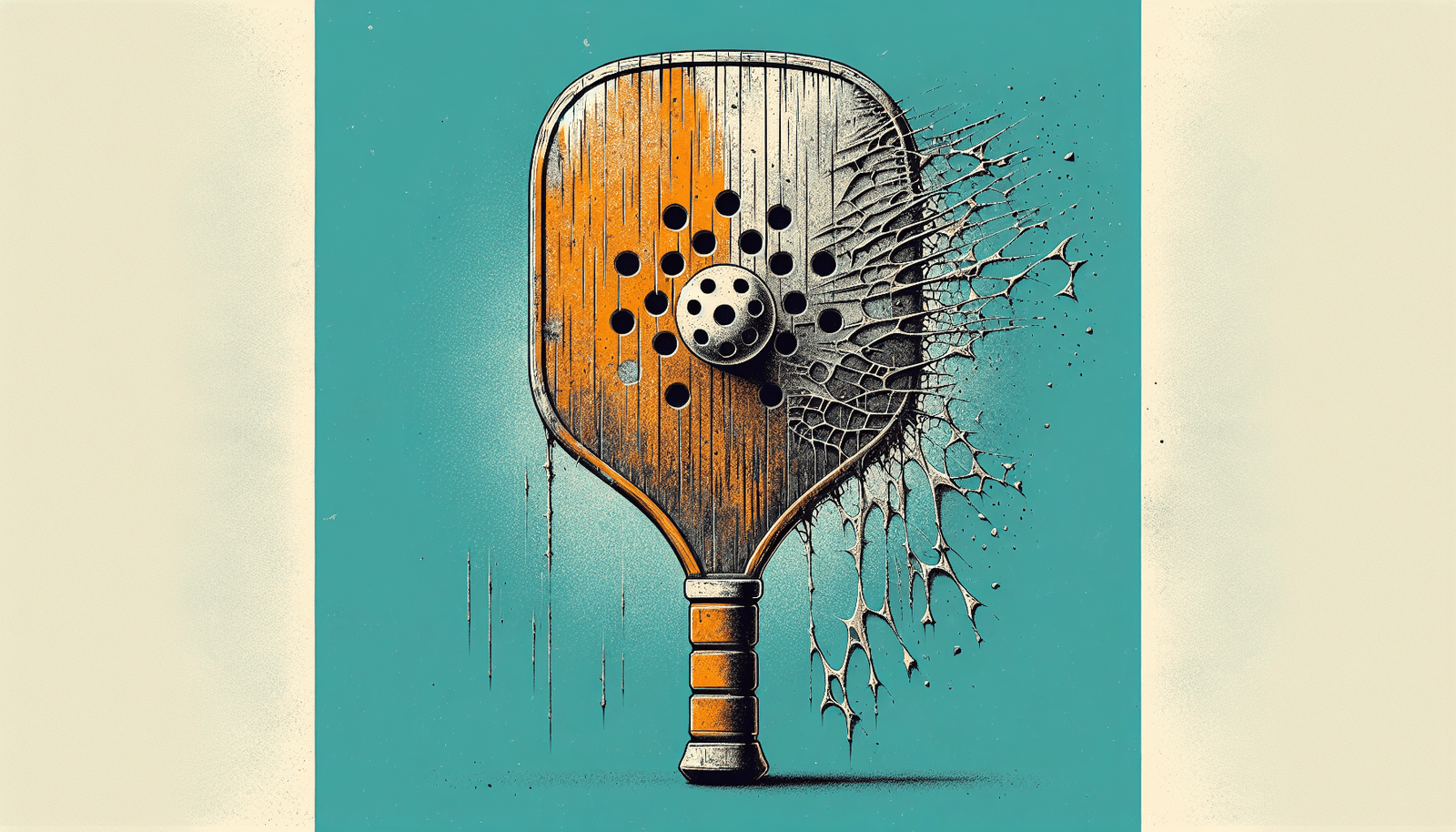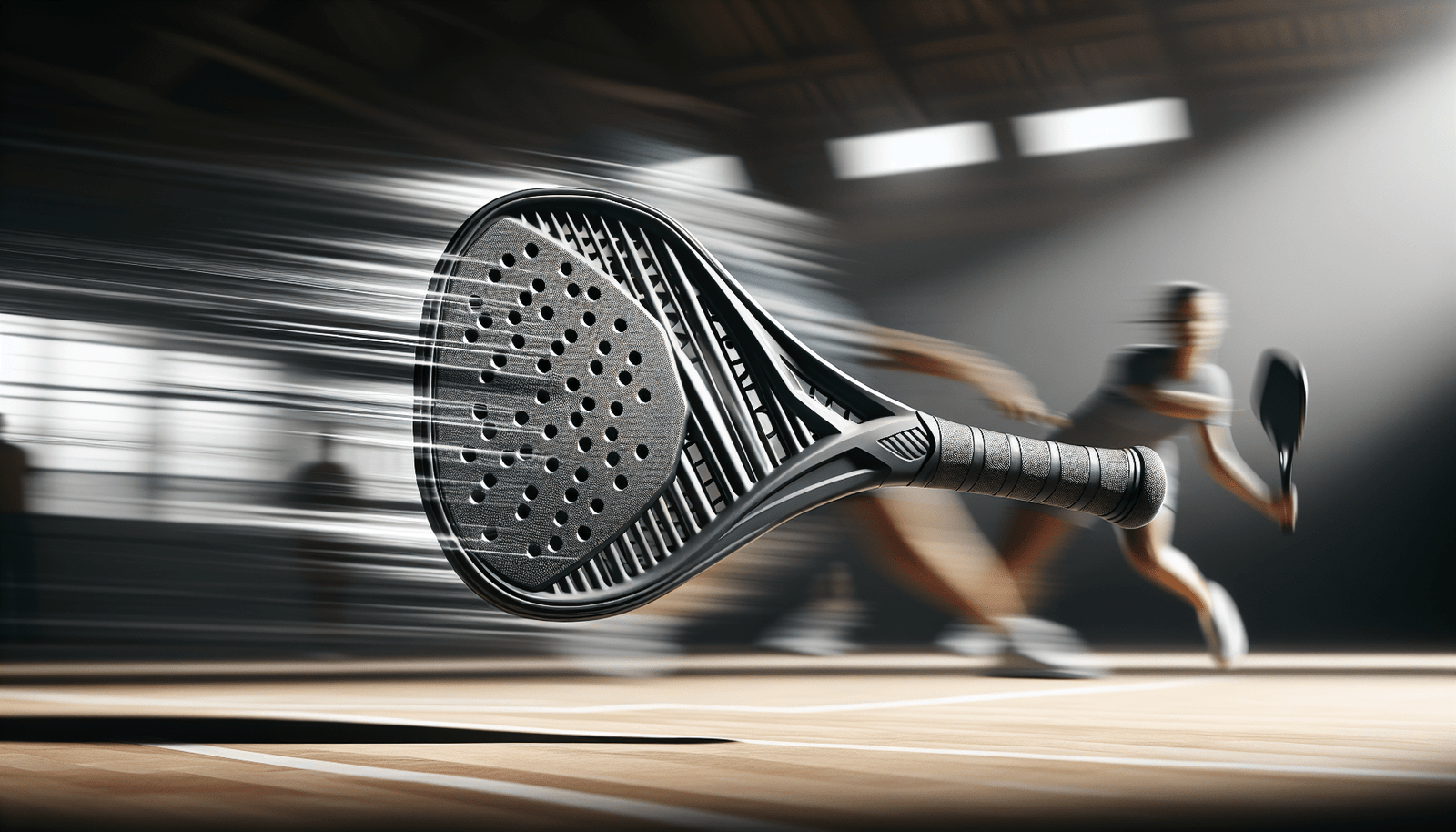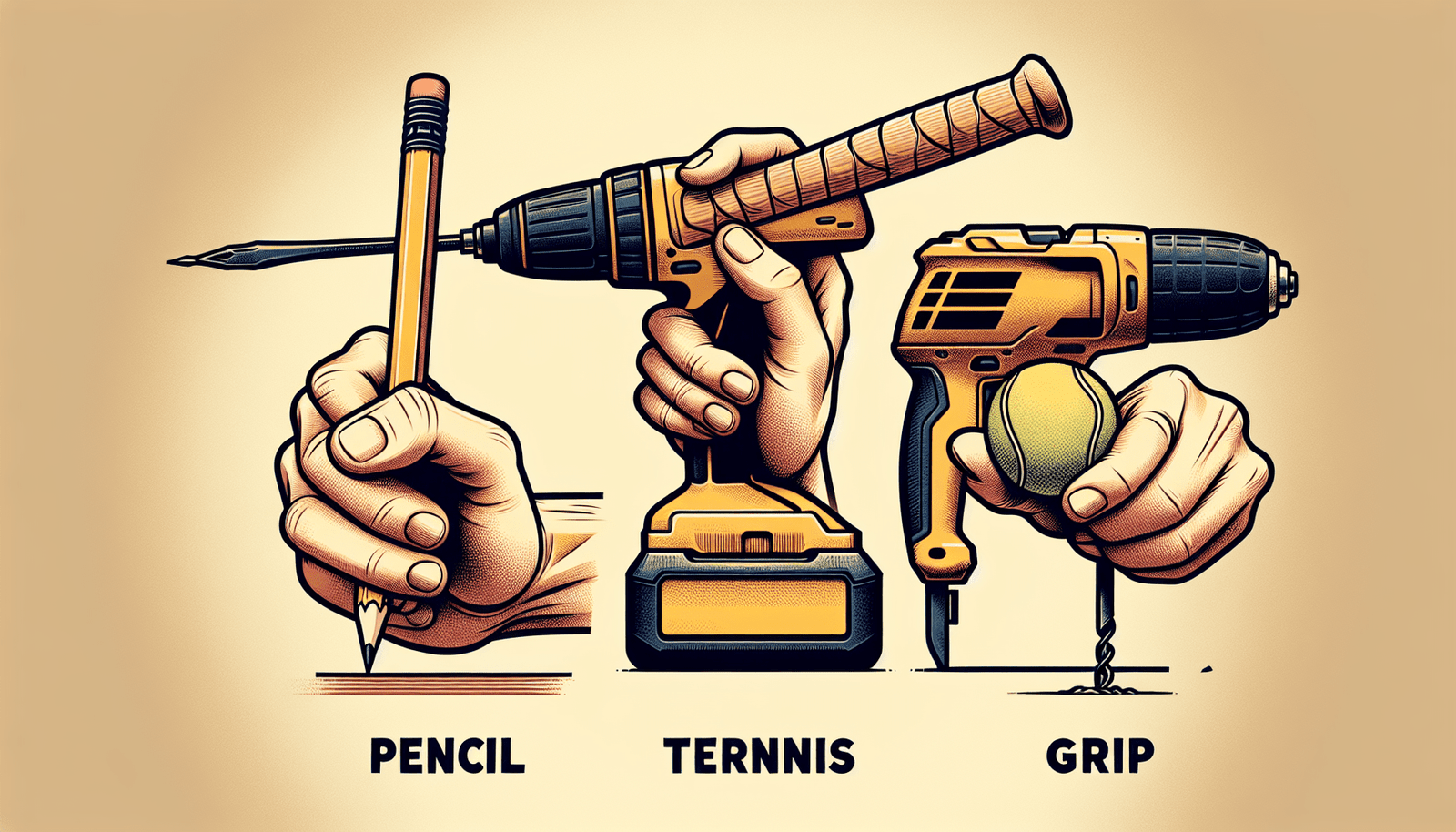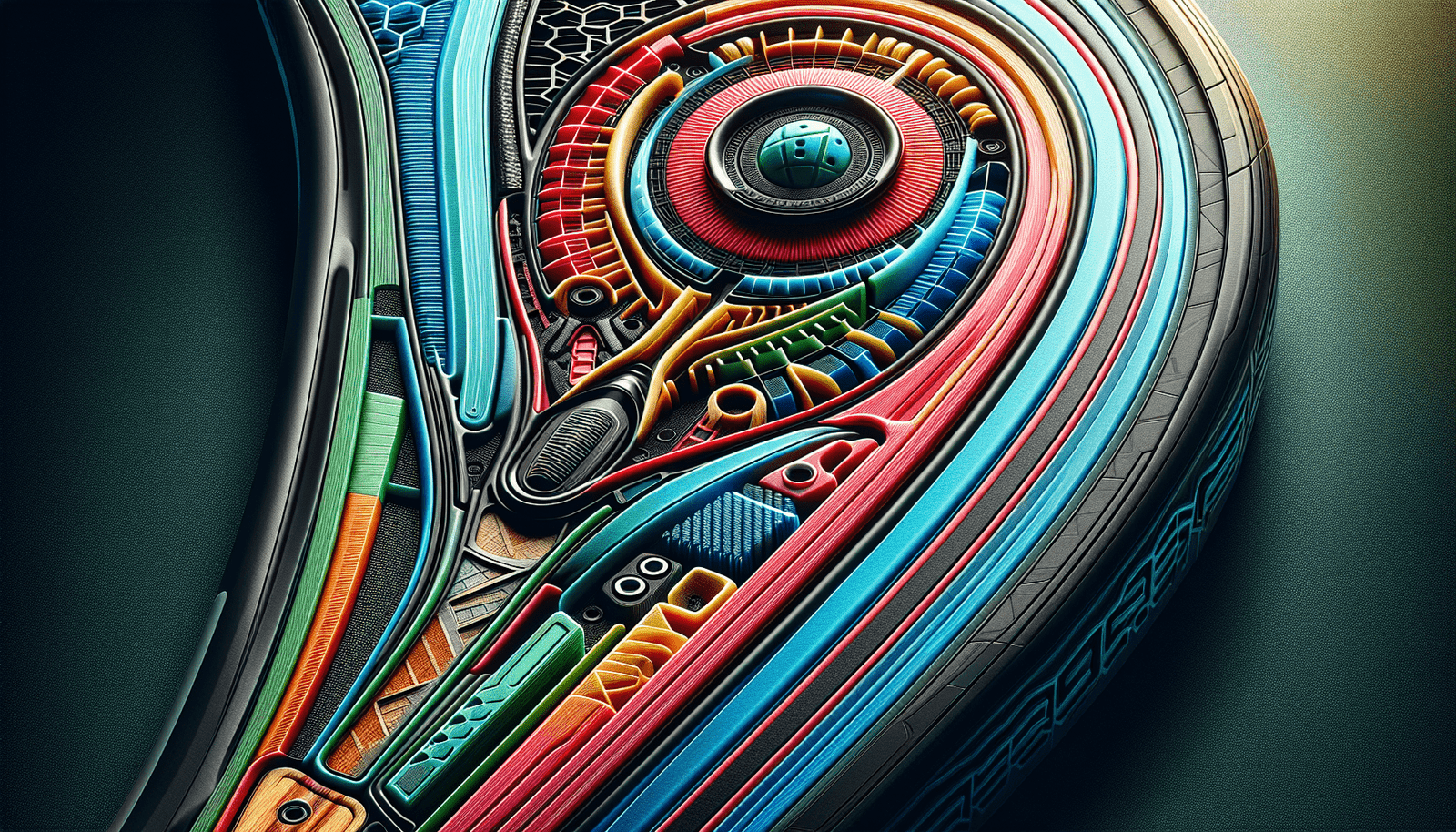Have you ever wondered how often you should replace your pickleball paddle? Whether you’re a seasoned player or just starting out, it’s important to know when it’s time to say goodbye to your old paddle and invest in a new one. In this article, we’ll explore the factors that can affect the lifespan of a pickleball paddle and provide you with some helpful tips to determine when it’s time for an upgrade. So, read on to learn how to keep your game on point and ensure you’re playing with the best equipment possible.
Understanding Pickleball Paddles
Pickleball, a popular racquet sport, requires the use of specialized equipment known as pickleball paddles. These paddles are an essential tool for players to manipulate the pickleball, a small wiffle ball, across the court. Understanding the different types of pickleball paddles and the materials used in their construction is crucial in optimizing gameplay and ensuring the longevity of the equipment.
Different Types of Pickleball Paddles
Pickleball paddles come in a variety of shapes, sizes, and weights to suit individual player preferences and gameplay styles. The most common types include:
-
Graphite Paddles: Known for their lightweight and maneuverability, graphite paddles are an excellent choice for players seeking fast and controlled shots. They provide a high level of responsiveness and are favored by competitive players.
-
Composite Paddles: Constructed from layers of fiberglass or carbon fiber, composite paddles offer a balance between power and control. They provide a larger sweet spot, making them suitable for players of all skill levels.
-
Wood Paddles: Traditional and durable, wood paddles are a popular choice among beginners and recreational players. They offer a softer touch on the ball but may lack the power and responsiveness of their graphite or composite counterparts.
Materials Used in Pickleball Paddles
The materials used in pickleball paddle construction play a significant role in its performance and durability. The three main materials utilized are:
-
Graphite: Lightweight and durable, graphite offers excellent strength-to-weight ratio, making it an ideal material for high-performance paddles. Graphite paddles provide enhanced control and maneuverability.
-
Fiberglass: Fiberglass is commonly used in composite paddles to enhance durability and provide a larger sweet spot. It offers a good balance between power and control.
-
Wood: Wood paddles are typically constructed from hardwood, such as maple or pine. While they may lack the high-performance characteristics of graphite or composite paddles, wood paddles offer durability, affordability, and a classic feel.
Factors Influencing Paddle Lifespan
To gauge when a pickleball paddle requires replacement, it is essential to consider several factors that can influence its lifespan. These factors include the frequency of use, the intensity of play, and the playing conditions.
Frequency of Use
The more frequently a paddle is used, the more wear and tear it will experience. Paddles that see regular use in competitive games or frequent practice sessions may require replacement sooner than those used infrequently.
Intensity of Play
Pickleball can be played at varying levels of intensity, from casual matches to intense tournament play. The more aggressive and powerful the gameplay, the more strain it puts on the paddle. Paddles subjected to intense play may deteriorate more quickly than those utilized in more laid-back games.
Playing Conditions
The environment in which pickleball is played can also impact the lifespan of a paddle. Outdoor play exposes paddles to elements like sun, heat, and moisture, which can degrade the materials over time. Additionally, playing on rough courts or in dusty conditions may cause accelerated wear on the paddle surface.
Signs that Indicate Paddle Replacement
Recognizing the signs of wear and damage is crucial in determining whether or not it is time to replace a pickleball paddle. The following indicators suggest that a paddle may need to be replaced:
Visible Damage or Wear
Inspect the paddle regularly for any visible signs of damage or wear. This includes cracks, chips, splintering, or significant surface wear. If the paddle shows signs of structural damage or material deterioration, it is likely time for a new one.
Reduced Performance
If you find that your shots are consistently falling short, lacking power, or lacking control, it could indicate paddle fatigue. Over time, paddles may lose their responsiveness, resulting in a decrease in performance on the court.
Lack of Control or Precision
Accuracy is crucial in pickleball, and a paddle that no longer provides adequate control or precision may be hindering your gameplay. If you notice a decrease in your ability to execute shots with accuracy or find it challenging to maintain ball placement, it may be time for a paddle upgrade.
General Guidelines for Paddle Replacement
While the lifespan of a pickleball paddle can vary depending on the factors mentioned earlier, there are general guidelines to consider when deciding whether or not to replace your paddle.
Manufacturers’ Recommendations
It is advisable to refer to the manufacturers’ recommendations for guidance on paddle lifespan. Manufacturers usually provide an estimate of the average longevity of their paddles based on typical usage patterns.
Average Lifespan of Pickleball Paddles
On average, pickleball paddles can last anywhere between six months to several years, depending on usage and quality. However, it is important to note that these are just rough estimates, and individual paddles may exhibit different wear patterns.
Taking Care of Your Paddle
Proper care and maintenance can significantly prolong the lifespan of a pickleball paddle. By following a few simple guidelines, you can ensure that your paddle remains in excellent condition:
Proper Cleaning and Maintenance
After each use, wipe down your paddle with a clean, damp cloth to remove any dirt, sweat, or debris. Avoid using harsh chemical cleaners or abrasive materials that could damage the paddle surface. Additionally, periodically inspect the grip and handle for wear and replace if necessary.
Protective Measures During Storage
When not in use, store your pickleball paddle in a protective case or cover to shield it from dust, sunlight, and accidental damage. Avoid storing your paddle in areas of extreme temperature or humidity, as it may affect the integrity of the materials.
Knowing When to Upgrade
In addition to recognizing when a paddle needs replacement, it is essential to know when it may be time for an upgrade. Upgrading to a new paddle can provide several benefits, including advancements in paddle technology and personal skill level improvement.
Advancements in Paddle Technology
The pickleball industry is continually evolving, with paddle manufacturers introducing new technologies and designs to enhance gameplay. Upgrading to a paddle with improved features can elevate your performance, offering increased power, control, and maneuverability.
Personal Skill Level Improvement
As you progress and improve your skills in pickleball, your paddle needs may change. Upgrading to a paddle that aligns with your evolving style of play can help you reach new levels of performance and enjoyment on the court.
How to Select a New Paddle
Choosing the right paddle depends on various factors, including your playing style, skill level, and personal preferences. Consider the following aspects when selecting a new pickleball paddle:
Considerations for Choosing a Paddle
-
Weight: Paddle weight affects both power and maneuverability. Lighter paddles are more maneuverable but may sacrifice power, while heavier paddles offer increased power but may be more challenging to handle.
-
Grip Size: Ensuring a proper grip size is essential for comfort and control. A grip that is too small or too large can adversely affect your gameplay. It’s recommended to try different grip sizes to find the one that feels most comfortable and secure in your hand.
-
Paddle Face: The surface texture of the paddle face can influence spin, control, and ball response. Smooth surfaces provide less spin, while textured surfaces can enhance the ability to put spin on the ball.
Testing Paddles before Purchase
Before making a final decision on a new paddle, it’s beneficial to try it out. Many retailers offer paddle demos or allow players to test paddles before purchase. Take advantage of these opportunities to get a feel for how the paddle performs and how it fits with your playing style.
Reusing or Repurposing Old Paddles
Instead of discarding old pickleball paddles, consider reusing or repurposing them. There are a few creative options for old paddles:
Donating or Giving to Others
Old paddles in good condition can be donated or given to friends, family members, or recreational centers that may be in need of equipment. Sharing the joy of pickleball and supporting the growth of the sport can be a rewarding experience.
Creative DIY Projects
Another fun option is to repurpose old paddles for various DIY projects. From wall decorations to clock faces, old paddles can be transformed into unique and personalized items that showcase your love for pickleball.
Conclusion
Regular evaluation of your pickleball paddle is vital to maintaining a high level of performance on the court. Understanding the factors that influence paddle lifespan, recognizing signs of wear, and knowing when to replace or upgrade your paddle are key to optimizing gameplay and enjoyment of the sport. By taking proper care of your paddle and selecting the right one for your playing style, you can extend its lifespan and continue to excel in the exciting game of pickleball.




